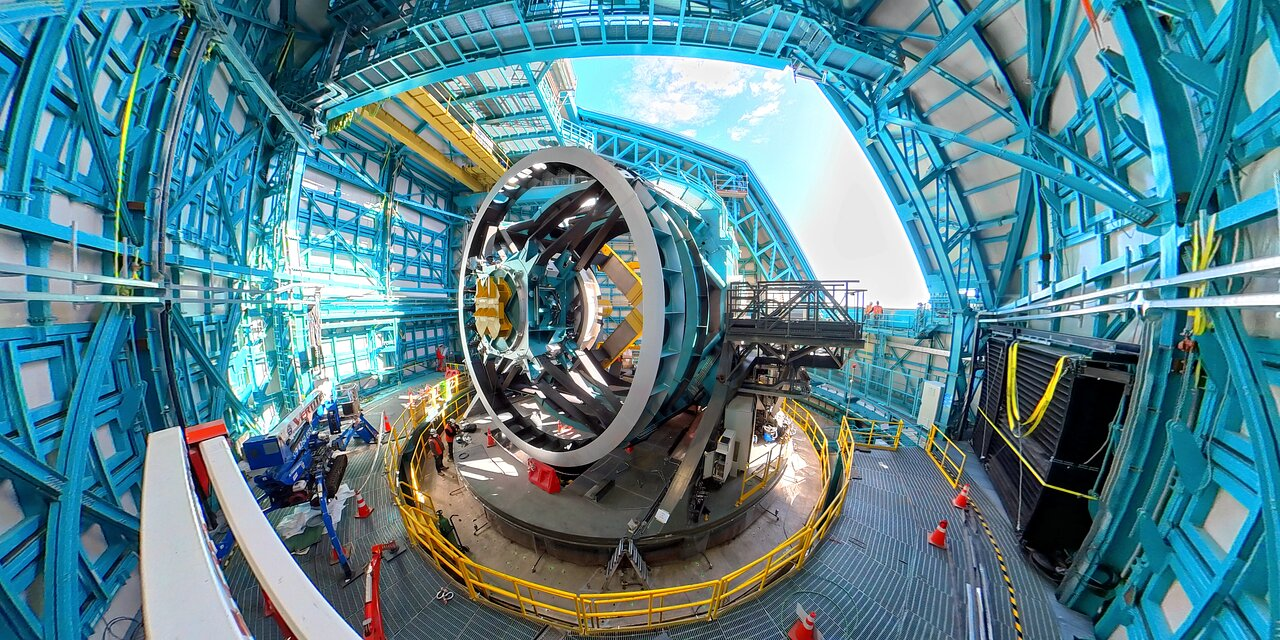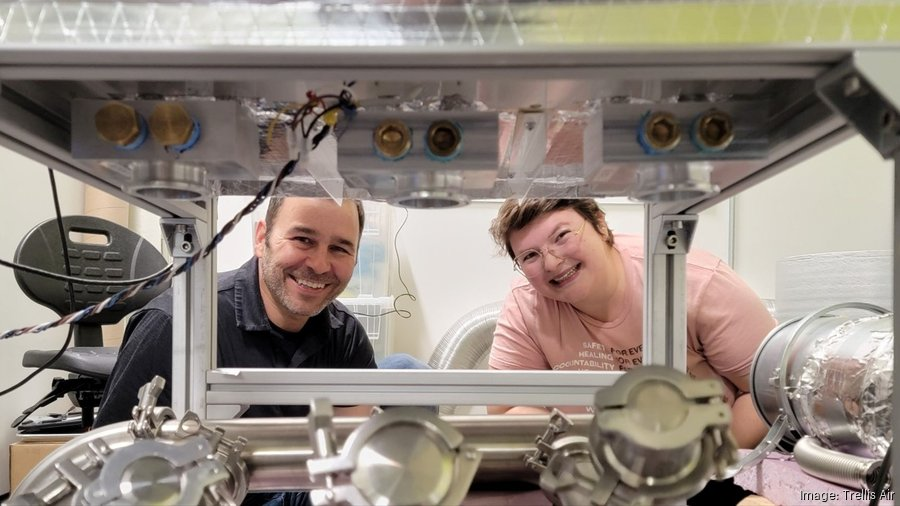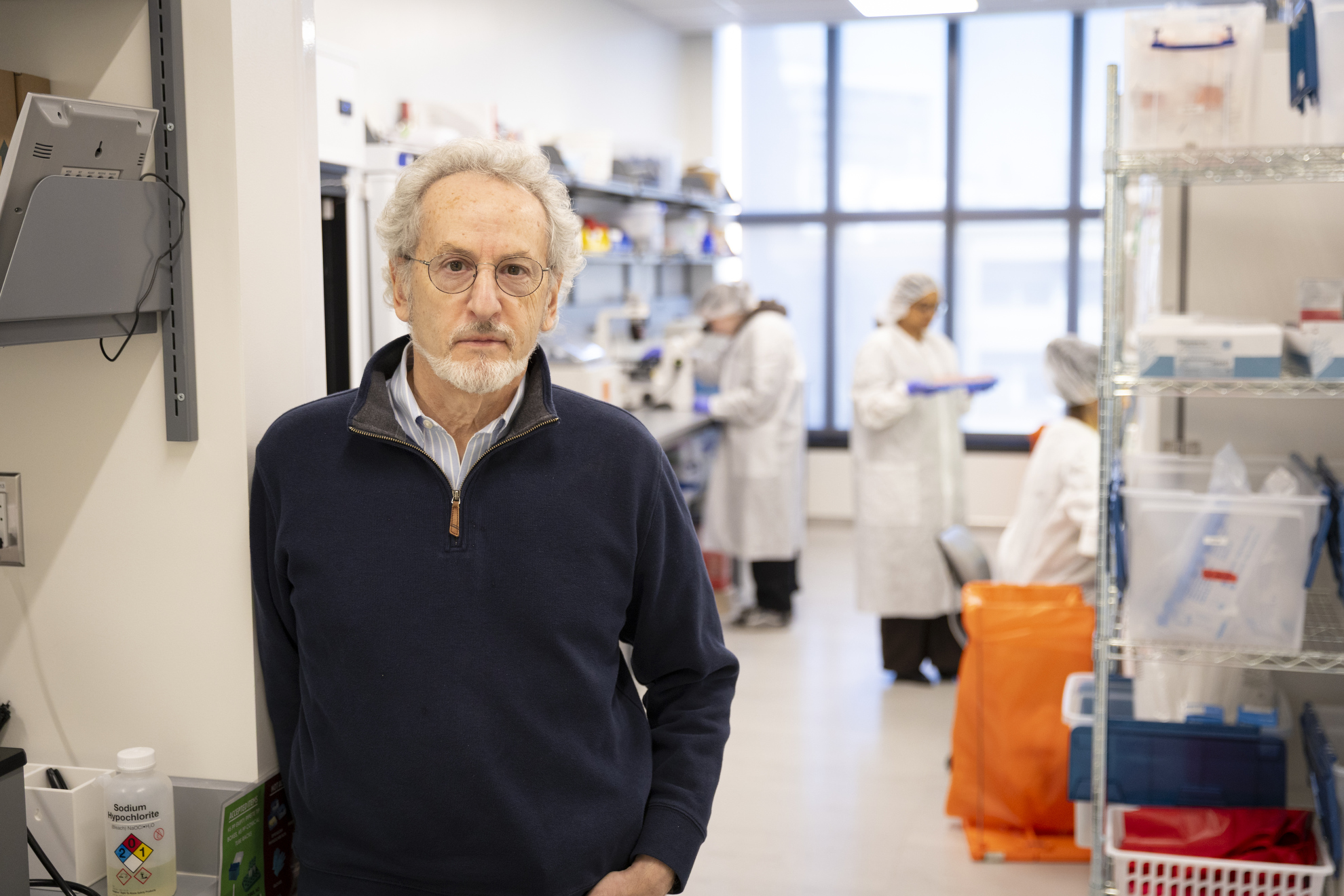The Rubin Observatory is set to revolutionize our understanding of the universe as it embarks on the groundbreaking Legacy Survey of Space and Time (LSST) project. This cutting-edge facility, spearheaded by an NSF project, aims to unveil the mysteries of dark matter while meticulously mapping the vast expanse of the Milky Way. With its advanced LSST camera, the observatory promises to capture high-resolution images that will allow astronomers to explore cosmic phenomena with unprecedented detail. Over the course of ten years, Rubin will observe the night sky, gathering a trove of data critical to pushing the boundaries of astrophysics. Upon its anticipated completion in mid-2025, the data generated will be an invaluable resource for researchers and educators alike, fostering a new era of astronomical discovery and public engagement.
The Vera C. Rubin Observatory stands out as a pioneer in astronomical research, particularly through its ambitious Legacy Survey of Space and Time initiative. This state-of-the-art facility, funded through the National Science Foundation, is dedicated to uncovering the elusive nature of dark matter while intricately detailing the structure of the Milky Way galaxy. Equipped with the innovative LSST camera, designed specifically for high-resolution cosmic imaging, the observatory is set to redefine our approach to astrophysical studies. By conducting extensive night sky surveys over the next decade, it aims to gather significant datasets that will shed light on profound cosmic questions. Once operational, Rubin Observatory will not only enhance scientific knowledge but also democratize access to astronomical data for the global research community.
The Significance of the Rubin Observatory in Modern Astronomy
The Rubin Observatory is a groundbreaking facility that promises to revolutionize our understanding of the universe. Positioned in Chile, it is part of the National Science Foundation (NSF) project aimed at creating the largest astronomical survey in history. With the powerful LSST camera at its heart, the observatory will capture extensive astronomical data over the duration of its 10-year survey. This initiative not only aims to map the intricacies of the Milky Way but also seeks to unveil the mysteries of dark matter and dark energy—two of the most significant components of our universe.
The significance of the Rubin Observatory transcends simple observation; it is shaping a new paradigm for astrophysics. By combining large-aperture designs with wide-field capability, it allows astronomers to explore vast areas of the sky simultaneously. This strategy will lead to time-lapse observations every night, enabling scientists to track dynamic changes in the cosmos, from fleeting comets to distant supernovae. Ultimately, the Rubin Observatory stands as a testament to human curiosity and ingenuity, promising to illuminate the dark corners of our universe.
Advancements in Astronomy Through the LSST Camera
The LSST camera is a pivotal innovation for the Rubin Observatory, designed to capture images that are 21 times larger than previous cameras. This significant enhancement is essential for ‘cosmic cinematography,’ which aims to provide a cinematic view of celestial movements and changes. The camera’s 144-megapixel capability will collect unprecedented details of the night sky, unraveling secrets about the formation and structure of the Milky Way. As it prepares for installation, the scientific community eagerly anticipates the way this technology will refine our understanding of cosmic phenomena.
Moreover, the LSST camera is not just about its size; it represents a major leap in technology, enabling precise calibration and data collection. This advancement positions the Rubin Observatory to explore dark matter and dark energy like never before. By analyzing changes over a decade, researchers can better understand the gravitational effects that hint at the existence of dark matter—accounting for approximately 90% of the mass in the Milky Way. The data generated by the LSST camera will empower scientists to tackle fundamental questions in astrophysics, further pushing the boundaries of our knowledge.
Exploring Dark Matter: The Role of the Rubin Observatory
Dark matter, often described as a mysterious substance, accounts for most of the universe’s mass and plays a critical role in the gravitational framework of the Milky Way. The Rubin Observatory is designed to advance our understanding of this elusive subject. With its immense data-gathering capabilities, the observatory will allow scientists to observe how dark matter influences the movement and formation of galaxies over extended periods. This research could potentially unlock the secrets surrounding dark matter, providing insights that have eluded physicists for decades.
The observatory’s approach is revolutionary because it openly shares its data with the scientific community, enabling collaborative efforts to decode the enigma of dark matter. By developing sophisticated methodologies to study the gravitational effects of this formidable component of the universe, researchers aim to establish clearer definitions and theories surrounding dark matter. As observations continue, the combined efforts at the Rubin Observatory will foster a deeper understanding of not just dark matter, but the broader fabric of the cosmos.
Milky Way Mapping: Insights from the Rubin Observatory
Mapping the Milky Way is one of the significant goals of the Rubin Observatory’s 10-year Legacy Survey of Space and Time (LSST) project. This initiative will provide astronomers with a comprehensive view of our galaxy, integrating data on stars, nebulae, and various celestial events. The Rubin Observatory’s innovative tools enable precise measurements of distances and movements, aiding in the creation of an intricate and detailed map of the Milky Way. By understanding our galaxy’s structure, scientists can glean insights into its formation and evolution.
Additionally, mapping the Milky Way contributes to broader astrophysical studies. As data from the LSST camera illuminates previously hidden aspects of the galaxy, researchers can connect local phenomena to more significant cosmic events. The implications of a comprehensive Milky Way map extend beyond mere observation; they can influence theories regarding the universe’s expansion, dark energy, and even the potential existence of life beyond Earth. The Rubin Observatory is at the forefront of this endeavor, making monumental strides in our cosmic understanding.
The Future of Astrophysics with the Rubin Observatory
The Rubin Observatory is poised to change the landscape of astrophysics in the coming years. As scientists prepare for the main camera’s commissioning, anticipation grows for the breadth of discoveries this revolutionary project could unveil. Researchers envision this facility as a platform for breakthroughs in understanding dark matter and dark energy, both critical to unlocking the universe’s mysteries. By accumulating vast amounts of astronomical data over ten years, the observatory serves as a comprehensive laboratory for theorists and experimentalists alike.
Looking to the future, the ethos of the Rubin Observatory emphasizes open data accessibility, education, and collaboration among scientists worldwide. By providing seamless access to its findings, the observatory champions a new era of transparency in science, where insights can be shared and explored collectively. This not only enhances the scientific discourse but also inspires future generations of astronomers and physicists to tackle unresolved questions about our universe, ensuring a dynamic journey into the depths of space.
Dark Energy and Its Implications for the Universe
Dark energy is perhaps one of the most perplexing aspects of modern cosmology, representing a force believed to be driving the accelerated expansion of the universe. The Rubin Observatory plays a crucial role in unraveling the complexities of dark energy through its extensive survey capabilities. By examining vast regions of space over time, the observatory will collect data vital for understanding how dark energy interacts with matter and influences cosmic structures. This understanding is imperative for forming a coherent model of the universe’s evolution.
The LSST camera’s unprecedented resolution and sensitivity will allow astronomers to detect subtle effects of dark energy across different cosmic scales. This pioneering approach seeks not only to quantify dark energy’s existence but also to decode its fundamental nature. By analyzing various celestial phenomena, from distant supernovae to large-scale cosmic structures, the Rubin Observatory aims to contribute significantly to resolving one of the greatest mysteries faced by astrophysicists today.
Educational Outreach: Engaging Future Generations with Astronomy
An essential aspect of the Rubin Observatory project is its commitment to educational outreach. The initiative aims to involve K-12 students in scientific exploration, fostering a passion for astronomy and astrophysics among younger generations. By making all its data accessible and encouraging hands-on learning experiences, the observatory creates opportunities for students to explore the universe organically. This approach cultivates critical thinking and engagement, producing a well-informed and inspired future workforce.
Moreover, the educational outreach efforts extend beyond the classroom, aiming to engage diverse communities worldwide. Interactive programs and resources will be developed, helping to demystify complex concepts such as dark matter and the structure of the Milky Way for audiences of varying backgrounds. This dedication to inclusivity not only enhances scientific literacy but also ensures that the excitement surrounding the Rubin Observatory’s discoveries reaches a broader audience, inspiring a collaborative spirit in the quest for knowledge.
Collaboration Between Institutions Through the NSF Project
The Rubin Observatory operates under the auspices of a collaborative project funded by the NSF, bringing together institutions and researchers from different fields. This partnership is crucial for maximizing the scientific returns from the data generated by the LSST camera and the observatory’s advanced instruments. By encouraging collaboration, the NSF project enables integrated research efforts that span astrophysics, computer science, and public outreach, fostering a multidisciplinary approach to understanding the universe.
Collaboration with international institutions is another key aspect of the Rubin Observatory’s approach. The project welcomes contributions from global scientific communities and encourages shared access to its findings. Through such cooperation, the initiative not only amplifies the impact of its research but also promotes a diverse array of perspectives in tackling complex astronomical questions. This collaborative framework positions the Rubin Observatory as a leader in modern scientific endeavors, emphasizing the power of collective inquiry in the quest for cosmic understanding.
The Engineering Marvel Behind the Rubin Observatory
The construction and engineering of the Rubin Observatory reflect a remarkable achievement in modern science and technology. From the design of the LSST camera to the innovative telescope systems, every element is crafted to optimize observations of the night sky. The engineering team has worked meticulously on every detail, ensuring that the observatory’s infrastructure supports its ambitious goals for the next decade. This dedication to excellence means that the building will not only efficiently conduct surveys but also endure the harsh environmental conditions typical of its Chilean location.
Furthermore, the engineering behind the Rubin Observatory is pioneering in its application of advanced technology for astronomical research. The integration of cutting-edge imaging systems and data processing capabilities enhances its ability to collect and interpret vast datasets. As the facility gears up for full operation, the innovative design and engineering will undoubtedly play a pivotal role in delivering groundbreaking findings about dark matter, the Milky Way, and the intricate dynamics of the universe.
Frequently Asked Questions
What is the Rubin Observatory and its primary purpose?
The Rubin Observatory, also known as the Vera C. Rubin Observatory, is a groundbreaking astrophysics facility designed for the Legacy Survey of Space and Time (LSST) project. Its primary purpose is to create a comprehensive map of the universe over ten years, studying dark matter, mapping the Milky Way, and capturing dynamic astronomical phenomena.
How does the LSST Camera contribute to astrophysics at the Rubin Observatory?
The LSST Camera is the largest astronomical camera ever constructed, crucial for the Rubin Observatory’s mission. It enables high-resolution, wide-field imaging of the night sky, allowing scientists to conduct ‘cosmic cinematography’ and observe transient events like supernovae while also gathering data to study the fundamental mysteries of dark matter and dark energy.
What major milestones have been achieved by the Rubin Observatory so far?
The Rubin Observatory achieved a significant milestone by capturing its first images of the night sky with a commissioning camera in October 2023. This success demonstrates the operational capability of the Simonyi Survey Telescope, paving the way for the integration of the LSST Camera and the upcoming ten-year survey.
When can we expect the first public images from the Rubin Observatory?
The Rubin Observatory plans to release its first public astronomical images in mid-2025, following a six-month commissioning period for the LSST Camera. These images will be part of a broadly accessible dataset, intended to facilitate scientific research and educational outreach.
How does the Rubin Observatory plan to make its data accessible?
The Rubin Observatory aims to provide all collected data immediately accessible to the global scientific community and the public. This open-data approach is a revolutionary aspect of the LSST project, intended to enhance collaboration among scientists and promote educational opportunities for K-12 students and participating institutions.
What are the implications of the Rubin Observatory’s research on dark matter and dark energy?
The research conducted at the Rubin Observatory presents a hopeful opportunity to unravel the complexities of dark matter and dark energy, which comprise a significant portion of the universe’s mass and energy. By utilizing the advanced LSST Camera, scientists anticipate gaining unprecedented insight into these phenomena, potentially redefining our understanding of fundamental physics.
How often will the Rubin Observatory scan the sky during its ten-year project?
During its ten-year project, the Rubin Observatory will scan the sky every few nights, capturing a time-lapse image of the sky that reveals changes and movements in astronomical objects. This continuous observation will be critical for both identifying transient events and studying long-term astronomical phenomena.
| Key Points |
|---|
| Rubin Observatory’s Simonyi Survey Telescope takes on-sky observations with a test camera, marking a major milestone in the LSST project. |
| The observatory aims to create a comprehensive map of the universe over a ten-year duration. |
| The LSST Camera will capture images that are 21 times larger than those from the test camera. |
| Astronomers will scan the sky every few nights to track changes and movements, focusing on dark matter and dark energy. |
| The project promotes open data access for the scientific community and educational outreach. |
| The initiative reflects a new approach to astronomical research by integrating wide-field capabilities with large aperture technology. |
| Rubin Observatory is poised to shed light on fundamental physics questions through its detailed observations. |
Summary
Rubin Observatory is on the frontier of astronomical research, aiming to drastically enhance our understanding of the universe through its groundbreaking Legacy Survey of Space and Time (LSST) project. With the recent successful test of its advanced Simonyi Survey Telescope and its innovative camera, the observatory is set to capture stunning images of the cosmos. This ambitious initiative will not only map our Milky Way and investigate dark matter and dark energy but will also provide valuable data to the entire scientific community. In doing so, Rubin Observatory is redefining the landscape of astronomy and education outreach, making significant strides toward uncovering the universe’s profound mysteries.



